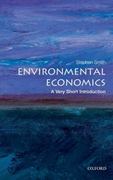Question
1. (4 points) The inverse market demand for a good is p=130-(1/20)q and the inverse market supply is p=(1/12)q. Suppose the government intends to place
1. (4 points) The inverse market demand for a good is p=130-(1/20)q and the inverse market supply is p=(1/12)q. Suppose the government intends to place a $4 per unit tax and collect it from the sellers.
a. Calculate and graph the market equilibrium prior to the tax.
b. Calculate and graph (on the same graph as part a) the market equilibrium after the tax. Calculate the economic incidence of this tax: specifically, calculate the consumer and producer burdens of the tax.
c. Calculate the elasticities of demand at the original equilibrium and use the formula=
(
)
dp=s(sd)tto confirm that the gross price change calculated in part b is correct.
2. (6 points) Consider a labor market where the inverse market demand for labor is w=100-(1/10)L and the inverse market supply for labor is w=(1/40)L, where w is the hourly wage rate and L is the number of hours worked. Suppose the government is considering placing a $1 per hour tax on either buyers or sellers.
a. Calculate and graph the market equilibrium prior to the tax.
b. Calculate and graph (on the same graph as part a) the market equilibrium after the tax is collectedfrom buyers. Calculate the economic incidence of this tax: specifically, calculate the consumer and producer burdens of the tax.
c. Calculate and graph the market equilibrium after the tax is collectedfrom sellers. Calculate the economic incidence of this tax: specifically, calculate the consumer and producer burdens of the tax.
d. Using your answers from parts b and c, does the gross price differ when collecting the tax from buyers or sellers? Does the economic incidence differ when collecting the tax from buyers or sellers?
Step by Step Solution
There are 3 Steps involved in it
Step: 1

Get Instant Access to Expert-Tailored Solutions
See step-by-step solutions with expert insights and AI powered tools for academic success
Step: 2

Step: 3

Ace Your Homework with AI
Get the answers you need in no time with our AI-driven, step-by-step assistance
Get Started


